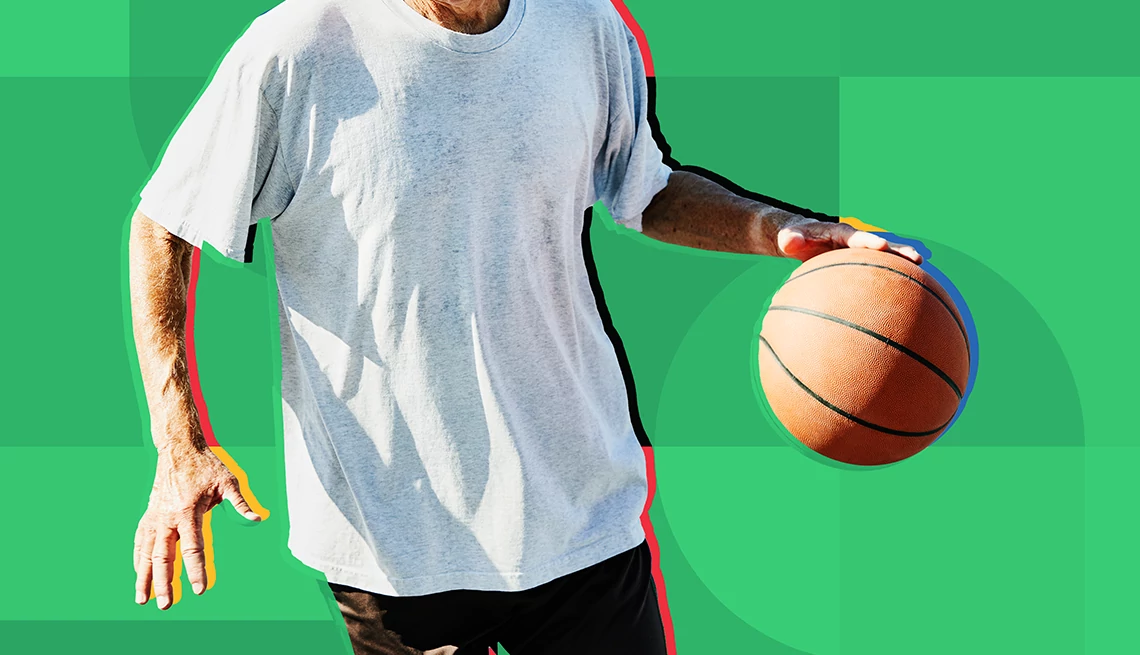
How to keep playing the contact sports you love
- Select a language for the TTS:
- UK English Female
- UK English Male
- US English Female
- US English Male
- Australian Female
- Australian Male
- Language selected: (auto detect) - EN
Play all audios:

EAT AND DRINK TO YOUR HEALTH “Your body is more resistant to growth and repair as you age,” says Skolnik, “so it takes more protein to press that muscle-building button.” But timing is
important, she adds. You want to “fuel your body appropriately at each meal,” she says. “Don’t skip breakfast. You need protein starting in the morning and adequately distributing it through
the day, 25 to 35 grams per meal, to maintain muscle. If you’re working out pretty intensely you might go as high as eating 30 to 40 grams at each meal.” And don’t demonize carbohydrates.
You need them for recovery. After a game, have some easy-to-digest foods like a banana, yogurt or a plain bagel with jelly or honey. Regardless of your age, Skolnik says, “If you’re doing
the work, you need the fuel. Even if your car’s old, it still needs the gas tank filled.” Hydration needs, however, are a little different from food intake. A large percentage of water
intake is stored in muscles. Since older adults have less muscle mass — humans lose as much as 3 to 5 percent each decade after age 30 — they have fewer areas for water storage. Numerous
factors affect how much water you need, such as kidney function and medication side effects. Also, you tend to lose more water as your level of aldosterone — a hormone that helps regulate
water excretion — goes down as you age. Beatty suggests having about 20 ounces of water a few hours before exercising and about 4 to 8 ounces of water for every 20 minutes of exercise. You
might drink more if it’s hot and humid or the exercise is intense. Getty Images KEEP GOING TO KEEP GOING Deb Smith, 69, who sits on the board of the National Senior Games Association, began
playing sports when she was young. She played basketball for the University of Maine in the 1970s and continues to play regularly where she lives in Portland, Maine. “I have two new knees as
a result of basketball,” she says. “I’m an avid proponent of continuing to play. I have women calling and emailing regularly and saying, ‘I haven’t played in 40 years.’ I encourage them to
come and check us out, but it’s helpful if they’ve been doing some kind of physical activity, even running, swimming, biking.” While it may be easier for those who have been playing all
along, you can still pick up a contact sport if you’ve never tried. Yes, if you’ve been a total couch potato, it will be difficult. “You’ll have to build up cardiorespiratory fitness and a
little resiliency before engaging in contact sports,” Beatty says, “but, again, you have to know your body, and modify activity if you need to.” AND IF YOU GET INJURED, IS IT GAME OVER? If
you do get injured, you may be apprehensive to play again. Beatty suggests “having an honest assessment with yourself each season. ‘Have I been cross-training? Am I fit this year? Do I need
to adjust my level of play?’” “If you’re not sure, you can always follow up with your doctor to see what’s appropriate for you to do and not to do,” says Joel M. Press, M.D.,
physiatrist-in-chief at HSS. Use your common sense when taking on a contact sport. And while it’s great for your physical well-being, it’s also a wonderful way to meet people and enjoy
camaraderie and community. “I have friends from all over the U.S. from playing basketball,” Smith says. “My group is my chosen family. We do community service together. Playing keeps you
happy and healthy. My Saturday mornings and Wednesday evenings are the best part of the week.” Video: How to Serve Like a Pro in Pickleball
